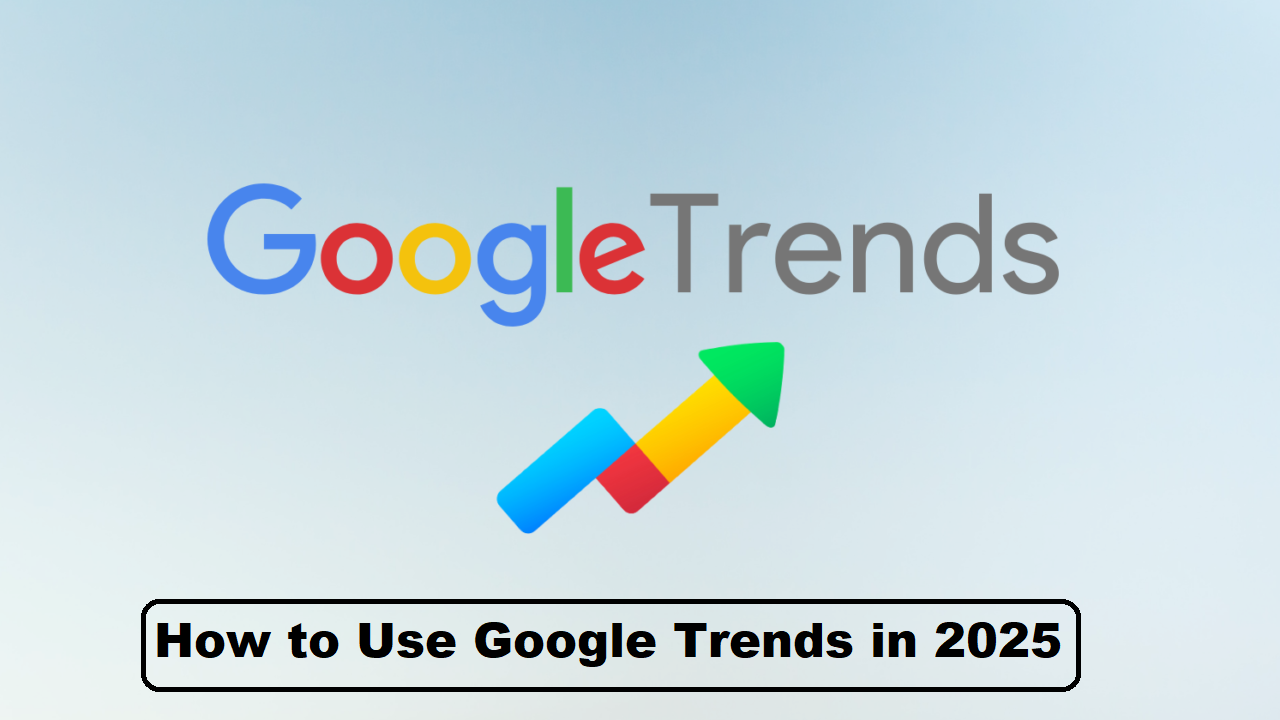In today’s digital-first world, knowing how to use Google Trends is no longer just a bonus—it’s a necessity. Whether you’re a content creator, marketer, SEO strategist, student, or small business owner, understanding what people are searching for online can shape everything from your blog posts and YouTube videos to product launches and ad campaigns. That’s why learning how to use Google Trends effectively can unlock powerful insights that give you a major edge in 2025.
Google Trends is a free tool that tracks search interest in real-time, allowing you to compare keywords, monitor spikes in popularity, and discover new trending topics before your competitors do. If you’re creating digital content, analyzing online behavior, or trying to rank higher on Google search results, knowing how to use Google Trends can help you identify exactly what your audience wants—and when they want it.
In this blog post, we’ll walk you through a complete guide on how to use Google Trends to boost your digital strategy. From identifying rising search terms to comparing seasonal keyword trends and analyzing regional interest, we’ll show you how to make the most of this powerful yet underused tool. Ready to turn search data into smarter decisions? Let’s get started.
🔍 What Is Google Trends?
Before diving into how to use Google Trends, let’s understand what it is.
Google Trends is a free analytical tool provided by Google that shows how often a particular search term is entered relative to the total search volume. It allows users to view interest over time, related topics, geographic trends, and rising queries.
This makes it invaluable for:
- Content creators researching blog or video ideas
- Marketers seeking keyword insights
- Entrepreneurs analyzing product demand
- Journalists tracking public interest in events
- SEO experts optimizing for high-volume keywords
Now, let’s dive into exactly how to use Google Trends to your advantage.
📈 Step-by-Step Guide: How to Use Google Trends
1. Start at the Google Trends Homepage
Visit trends.google.com. You’ll see trending searches of the day and a search bar where you can enter any term or topic.
2. Enter a Keyword or Topic
Type in a keyword you’re interested in—for example, “electric cars,” “AI tools,” or “fitness apps.” The tool will show a graph indicating the popularity of that term over time.
3. Refine Your Filters
Once your search term is entered, refine your results by adjusting:
- Location: Global or specific country
- Time Range: Past hour, 7 days, 30 days, 12 months, or since 2004
- Categories: Such as business, health, or tech
- Search Type: Web, Image, News, Shopping, or YouTube
If you’re learning how to use Google Trends for business or content, filtering is essential to get accurate, actionable insights.
4. Compare Search Terms
Click “+ Compare” to analyze up to five keywords at once. This is useful for comparing brand names, products, or topics to see which is gaining more traction.
For example, compare “Samsung Galaxy S25” vs. “iPhone 16” to determine which keyword is trending higher before launching a product review or ad campaign.
5. Analyze Interest by Region
Scroll down to see a map showing search interest by subregion or city. This is helpful if you want to target specific geographic locations for marketing or content creation.
For local SEO, learning how to use Google Trends to pinpoint regional interest can make your campaigns far more effective.
6. Explore Related Topics and Queries
This section shows searches related to your main keyword, including:
- Top queries: The most common related searches
- Rising queries: Terms with the biggest increase in popularity
This is perfect for discovering new content ideas and staying ahead of trends.
📊 Why Learning How to Use Google Trends Is Essential in 2025
There are several reasons why mastering how to use Google Trends gives you an edge in today’s fast-moving digital world:
- Content Marketing: Create articles or videos based on current search demand.
- SEO Optimization: Choose high-volume, low-competition keywords.
- Product Research: Validate product ideas by checking demand trends.
- Stock Market Insights: Track interest in companies like “Nvidia stock” or “Tesla earnings.”
- Crisis Monitoring: Follow global or local crises to respond quickly with relevant messaging.
In 2025, with the rise of AI tools and search personalization, understanding what users want—and when—is key to staying competitive. And Google Trends gives you the real-time data to make informed decisions.
🔧 Pro Tips for Power Users
Now that you understand the basics of how to use Google Trends, here are some advanced tips:
1. Use Time Comparisons
Compare a keyword’s popularity this year vs. last year to spot seasonal trends. Great for planning product launches or promotions.
2. Embed Graphs
You can embed real-time trend graphs into your blog posts to make your content more interactive and informative.
3. Track Branded vs. Generic Terms
Compare branded terms like “Nike running shoes” vs. “best running shoes” to decide which keyword to target in your campaign.
4. Use Trends with Google Ads
By analyzing peak search periods, you can run ads when user intent is at its highest, improving ROI.
Final Thoughts: Mastering How to Use Google Trends for Success in 2025
Understanding how to use Google Trends effectively is a game-changer in today’s fast-paced digital landscape. Whether you’re looking to create content that resonates, optimize your SEO strategy, research market demand, or keep up with real-time global events, Google Trends provides invaluable insights directly from what people are searching for online.
By regularly exploring search interest over time, comparing keywords, and analyzing regional and related queries, you gain a clearer picture of audience behavior and emerging trends. This enables you to make data-driven decisions that improve your visibility, engagement, and ultimately, your success—whether in blogging, marketing, e-commerce, or research.
As we move deeper into 2025, the ability to leverage tools like Google Trends will only grow more critical. Those who know how to use Google Trends smartly will find themselves ahead of the curve, spotting opportunities before they become mainstream and avoiding outdated or declining topics.
Make it a habit to integrate Google Trends into your workflow and keep refining your approach based on the data it reveals. With practice, you’ll unlock powerful strategies to connect better with your audience, drive traffic, and build a stronger digital presence.
For continuous updates on SEO tools, digital marketing tips, and tech trends, visit BlogHear.com—your trusted resource for mastering the digital world in 2025 and beyond.




